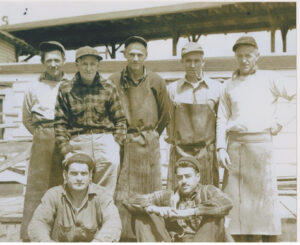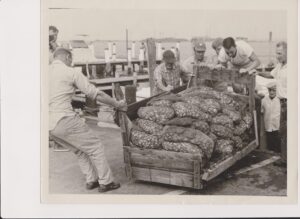This is probably not the right time to be criticizing anything at all about the three local boards of education. After all, they are in the midst of making history, of creating new and exciting compromises and educational improvements, and they are working hard to meet both financial concerns and continue to provide great educational standards for our children.
But sadly, they are in the same boat as the councils in Atlantic Highlands and Highlands who frankly don’t seem to care at all about whether people, disabled or not, can listen to and participate in public meetings.
In a way, it‘s even worse at the school board level because not only does it impact adults, but it’s a terrible thing to do to our children.
Although I’ve been complaining, writing, hurting, and been unsuccessful for more than a year in getting governing bodies in Highlands and Atlantic Highlands to ensure even the handicapped or disabled can participate in government meetings, Highlands still does not even ZOOM its meetings, let alone allow those at home to participate.
Atlantic Highlands, in spite of having everything in working order when the Governor mandated Zoom meetings and having spent over $17,000 after that to get in a grandy dandy new system, still hasn’t gotten it up and operational, what with training still needed to be done.
Then last week, at a Highlands meeting on school regionalization, the president of the Henry Hudson board seemed a little miffed at the end of the meeting that no one goes to board meetings; he urged everyone to come up and listen to everything they do.
So I accepted the invitation and went to this week’s meeting of the Henry Hudson Board of Education… thanks to a friend that provided transportation to and from the meeting.
It’s disaster.
Not only for the visually impaired, all those who can’t drive or leave home at night to go up the hill to the school or everybody else since the meetings are not on zoom, but even sitting there you don’t know what’s going on.
The meetings are held in the gym. That’s got to be the biggest room in the entire school and the one with the highest ceilings. Yes there is a mike system, at least the board president had a mike on a stand, then in his hand, then walked with it to congratulate a retiring employee (I think, couldn’t hear that either) but he turned away from the mic while he was talking.
They tried to fix it somehow or other, but even fixed, given the sparse population of the room, the weak audio system and the wide space between board members and audience, with only a few of them actually facing the audience, very little could be heard by those in the audience.
When it came to the all-important vote on the regionalization resolution, no one in the audience could hear any individual vote. (It was unanimously approved with two board members absent.)
So Mr. Henry Hudson Board President thanks for the invitation to attend a meeting. What I learned is that you want me there to be present, you just don’t care whether I can hear enough to know what’s going on.
Undaunted, and still praising the education in all three schools in these two towns, I went to a very exciting LEAD graduation at the Atlantic Highlands Elementary School today. That will be another story here, but parents, be so proud of your students there, who are so disciplined, orderly, and obviously love their teachers. Dr. Beams, be proud of a staff that shares that same love with the students, and are all so proud of every child’s accomplishments. Since it was a LEAP event, Chief Scott Reinert and police officers were there as well, and we can always take pride in each of them.
There were lots of parents there as well, and two grades of students, so it was a nice size crowd in their very large auditorium. But here again, acoustics.
The sound systems in these schools are absolutely horrible. Why invite parents to hear their children be praised by police, receive certificates of achievement and be highlighted for honors if you don’t let them hear everything that’s going on?
What made this acoustic problem so terrible and heartbreaking was when a charming and very attractive young lady was cited for her essay and had the opportunity to read it to the whole crowd. And read she did. At the mike. Standing up tall and capable in front of friends, family, members of the school administration and police. A heady moment for any youngster. There’s a special irony in the lack of acoustics in this particular instance, but I’ll let that ride rather than draw undue attention to a young lady who deserved to be recognized, heard and applauded.
She was recognized. She was applauded. But all those proud parents and other guests simply could not hear her.
If it’s money that’s keeping both governing bodies and boards of education from providing the right to hear to everyone, then make it a priority and do something about it. If it’s not money, be creative, be ingenious. Heck, at least move meetings to a smaller, lower ceilinged room. Ask elected personnel to speak louder, to face the people when they’re talking, to even move closer to be sure they can be heard. In the school system, we have educators. Surely they can think outside the box and come up with a solution. If it’s elected officials, you waste bundles of money in annual budgets often enough. Spend something on public address systems, ZOOM that works, anything to let the people know they not only want to be heard, but they want to hear as well.
If it’s something else, then admit you simply don’t want the public to know what’s going on.











